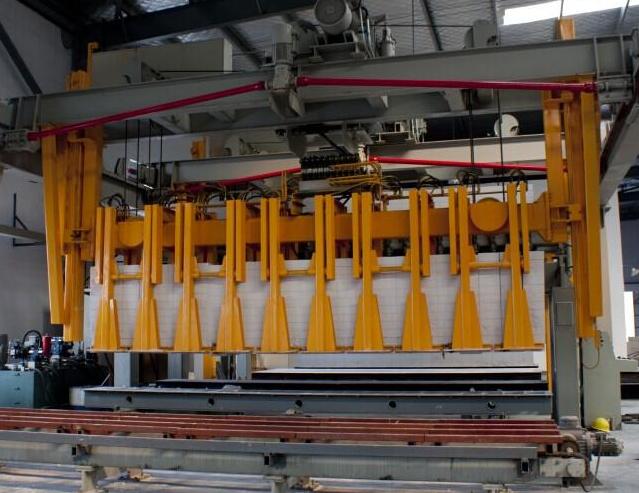Steam curing cracks caused by incorrect operation of aerated concrete equipment?
September 27, 2021
In the production process of aerated concrete equipment, sometimes when we leave the kettle, we see a brick crack with obvious and regular characteristics in the aerated block. In fact, many people do not understand what such a crack is. We call it steam curing crack (or autoclave crack) for the time being. In some aerated block production plants, this kind of brick cracks often appear, and there are different opinions on the causes. Once they appear, it is not easy to solve them. To fundamentally solve this brick crack problem, the following contents may be helpful to you.
The so-called steam curing crack (or autoclave crack) means that after cutting, the blank of the aerated block is intact and free of cracks before entering the autoclave. However, when entering the autoclave to complete the steam curing operation, it is found that the aerated block has lightning linear cracks from top to bottom when leaving the autoclave. Steam curing cracks, some very small, some very thick, serious can be put into a person's fingers; The first mock exam is easy to crack the steam on the first mock exam. When the mold is more serious, there are two cracks at each end of the mold. The cracks are common from the top to the bottom, but sometimes there are cracks on the side.
If the incorrect operation of the aerating block out of the kettle causes steam curing cracks, let's see how to solve them:
Autoclave curing is generally divided into three stages: heating stage, constant temperature stage and cooling stage. If the heating or cooling rate is too fast during steam curing, steam curing cracks will occur in the aerated block, especially in winter. In winter, because the outdoor temperature is often low, after the steam curing operation is completed, if you are eager to leave the kettle just after pressure relief, there may also be small cracks due to excessive temperature difference.
Solution: during the production of aerated concrete equipment, the heating rate and cooling rate of autoclave shall be strictly controlled, and the initial heating and cooling rate shall not exceed 20 ℃ / hour. In winter, the aerated block products can be transported out of the kettle only after they are cooled below 30 ℃.






